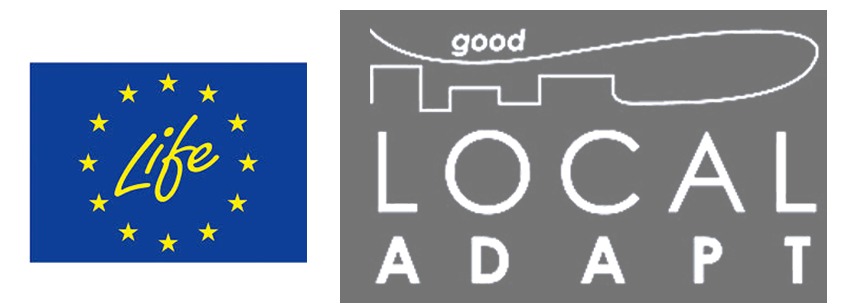
LIFE GOOD LOCAL ADAPT – Facilitating good adaptation in urban areas of small and medium sized municipalities of the Basque Country
Good Practices Category
Good Practices Summary
Good Local Adapt Network. Adherence to Good Local Adapt Network will allow access at all times to the knowledge generated throughout the project, with the aim of replicating these experiences in other municipalities. The members of the Network will have the opportunity to know first-hand the methodologies, procedures and processes developed in the different actions with the pilot municipalities of the project. For its part, the Network will create a channel of continuous communication, where its members can share their experiences in the implementation of the different actions and provide a framework of support in the difficulties that arise.
Mitigation
European cities are highly vulnerable to both current climate variability and future climate change. According to the European Environment Agency, European cities will experience increased levels of heat, flooding, water scarcity and droughts.
Replicability/Knowledge Transfer
Transfer the project approach, process and outputs to municipalities throughout the EU is one of the key objectives of the project and guaranteed thanks to Network. Adherence to Good Local Adapt network will allow access at all times to the knowledge generated throughout the project, with the aim of replicating these experiences in other municipalities.
Resources
The project aims to adopt demonstrative sustainable solutions for climate change adaptation in selected neighbourhoods of Amurrio, Balmaseda and Legazpi, promoting the participatory identification of optimal solutions for each municipality. Through the project, collaboration is fostered between the public and private initiative in order to achieve the adoption of innovative technological solutions that contribute to mitigating the main effects of climate change. At the same time, adaptation prioritization methodologies is made available to small and medium-sized municipalities.
Resources developed include:
- Climate change barometer to identify the concerns and needs of the population in relation to climate change, and assess their level of perception of climate risk as well as their responses to it.
- Public participation processes in the pilot municipalities.
- Specific Adaptation Solutions and Action Plan Charts Design.
- Climate change adaptation through urban planning and normative.
Target Audience
Policy Implications
The project will develop specific solutions for city planning, building restoration and the new regulation to adapt to the climate change in small and medium sized municipalities.
Social Dimension
Increase the public’s knowledge of climate change issues, risks and behaviours, and public support for adaptation measures in urban areas, especially those that offer the most effective incentives to foster individual action is within the core project objectives.
Moreover, one of the project actions is the Participation, Community Involvement and Public Outreach towards
Climate Change Adaptation in small and medium sized municipalities. An executive summary with the results obtained in this domain is available in the following link:
https://goodlocaladapt.com/sites/default/files/videos/180730%20LIFE%20C2%2000%20FINAL%20DELIVERABLE%20EXEC%20SUMMARY%20eng.pdf
Innovation Type
Awareness, Guidelines, Methodology, Process, Social, TechnologyInnovation
The project promotes the adoption of innovative technologies (as well as traditional) solutions that contribute to mitigating the effects of heat and an adapted management of water resources. For example, a prototype of a rehabilitated building in Balmaseda that includes five innovative solutions to face heatwaves in an efficient way is developed.
Outcome/Barriers
Expected project results include:
- Best measures for adapting to climate change threats in each of the five demonstration neighbourhoods identified along with the implementation of those solutions in two prototype pilot sites.
- Customised solutions for the seven sites outlined in project sheets, including technical data about the solutions convenient and ideal locations for implementation.
- A prototype of green infrastructure implemented in Amurrio in an urban public space, including solutions for vegetation and water management, allowing water savings in the irrigation process, energy savings in houses protected from heat by the vegetation, and absorption of CO2 by the vegetation.
- A prototype of a rehabilitated building in Balmaseda that included five innovative solutions to face heatwaves in an efficient way. This will constitute a benchmark visit centre for citizens and public authorities, and will drive awareness-raising on the project and replication of solutions long after the end of the project).
- Theoretical testing of the incentive model by the city council of Legazpi, through a questionnaire and a focus group of local citizens, as developed in the neighbourhoods of Amurrio, Balmaseda and Legazpi, in relation to the most important incentives for fostering individual or private action.
- A reduction of 55- 65% in greenhouse gas emissions and of 1-5% in air pollutant emissions.
- A reduction of 1-2°C in urban temperature.
- A reduction in water consumption resulting in annual savings of 250-770 m3; and
- A reduction in energy consumption of 6.5%, and a 30% shift in energy source to renewables.

